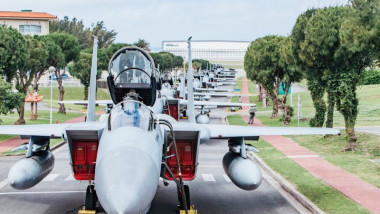Taiwan quake led to traffic jam of Japanese air power
Fighter pilots practice scrambling their jets so they can take off in minutes should a military threat arise. But what do they do when Mother Nature is the enemy?
At one Japanese air base, they take to the streets.
After a 7.4-magnitude earthquake off Taiwan last week prompted a tsunami alert for Okinawa, the Japan Air Self-Defense Force’s Naha Air Base, attached to the low-lying Naha Airport on the southwestern coast of the island, moved a dozen F-15J fighter jets to a two-lane road on higher ground.
